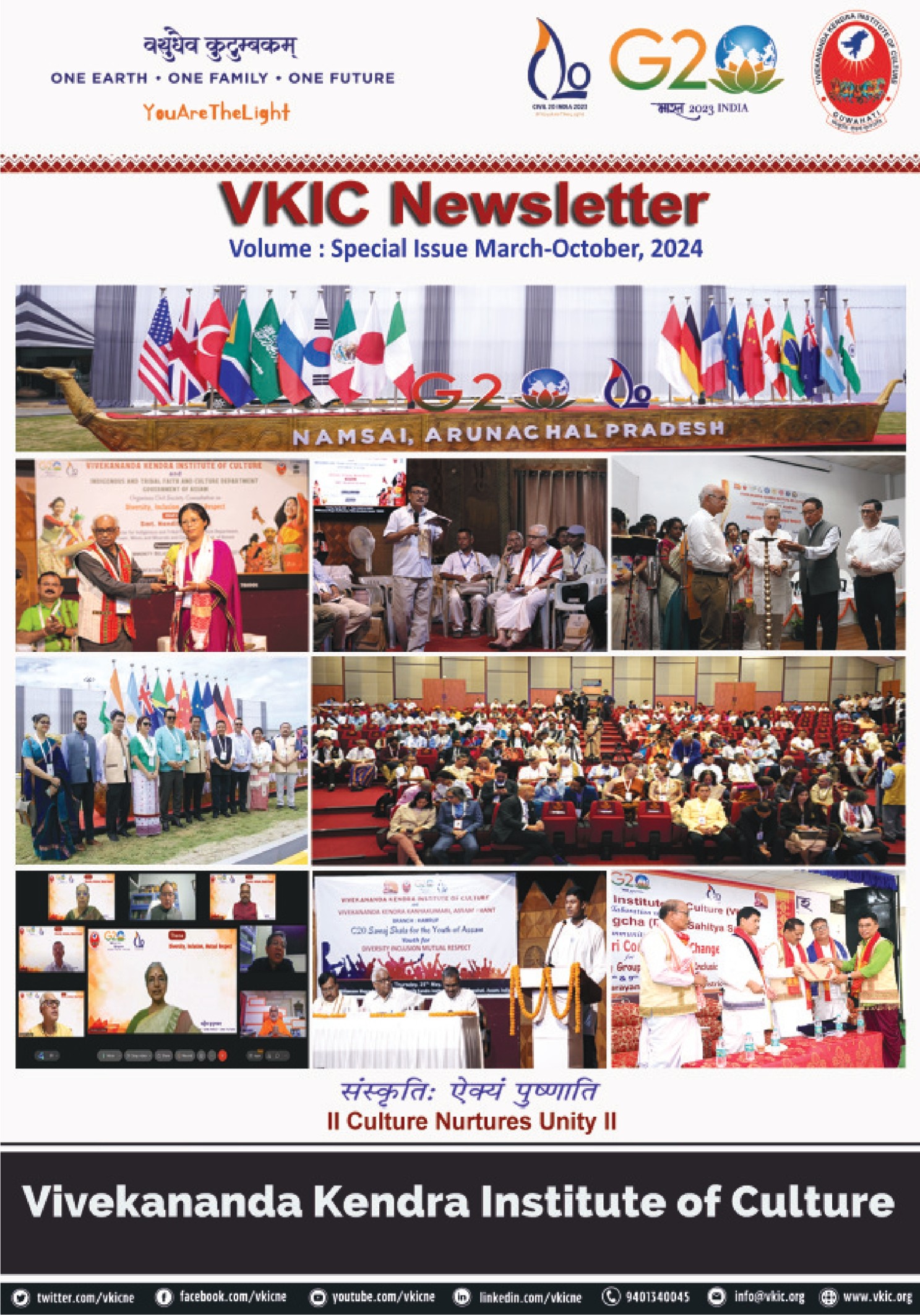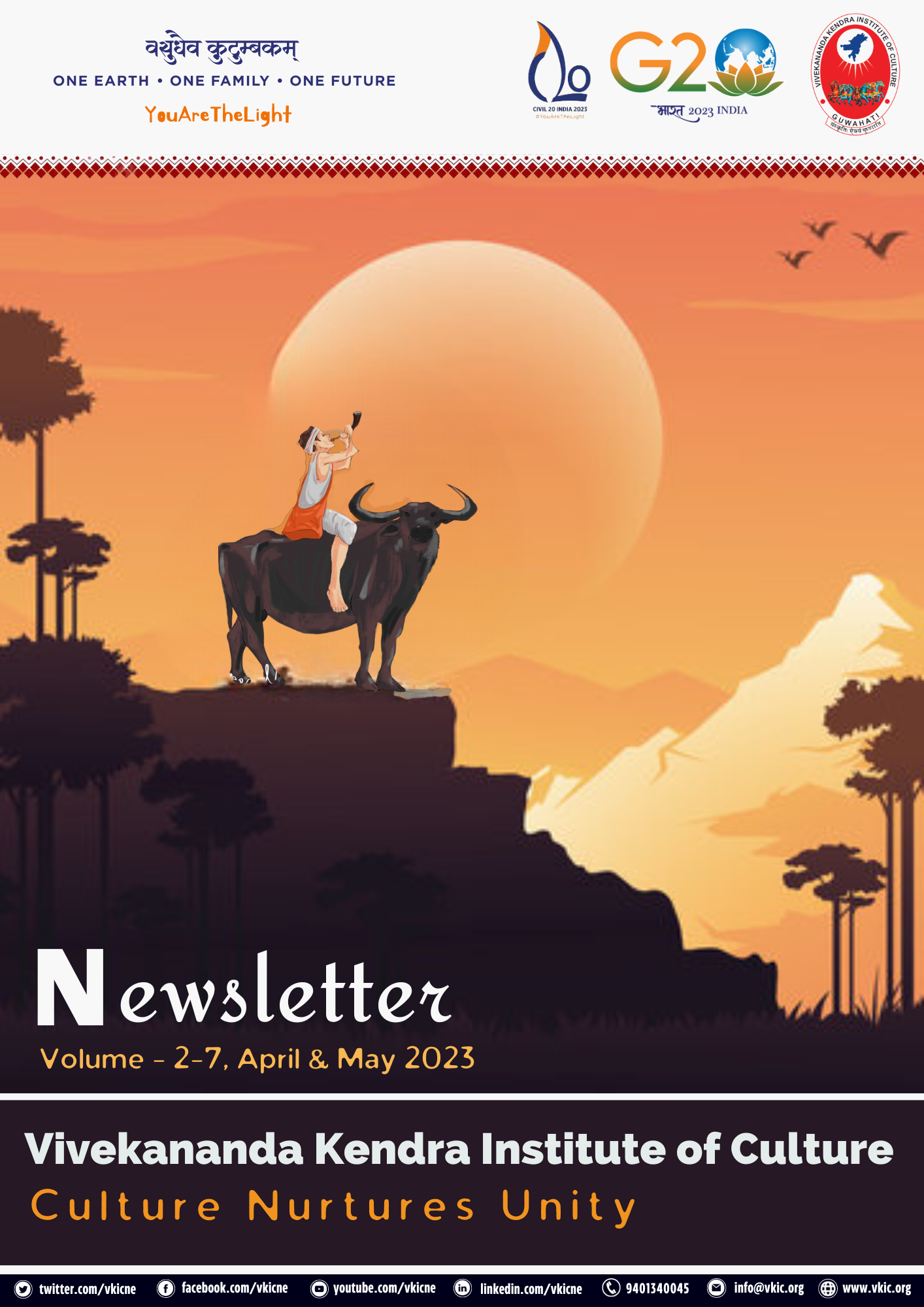The micro data of different communities of India –its castes and tribes – if put together and viewed in macro frame-work often leads us to the threads of unity. The apparent diversity, the cultural plurality gives way to commonality of cultural elements, our cultural continuum. Our approach brings a lot of difference – the approach whether we want to emphasize the diversity or intend to search the basic materials of culture, the permutation and combination of which make the difference. The diversity becomes a burden if we emphasize only the differences and intend to promote the social divide. On the other hand, it reveals the richness of the multi-colored culture, the beautiful mosaic of our culture. There is immense cultural richness, the variety, on one hand, and the underlying unity on the other. The linkages often defy the ethnic and geographical boundaries.
Take the case of the Nagas, There is so much linguistic plurality among them that different sections of a tribe or different villages of the same tribe, and even wife and husband at a time speak different languages. On the other hand, the score system of counting, such as among the Changs, links them to the distant Mundas. Their linguistic diversity does not defy the fact that India is a distinct ‘Language Zone; the Naga languages, like all other languages of India, except Khasi and Kashmiri, follow ‘sov’ (subject object verb) pattern. Naga languages under ‘Linguistic Phylum Concept’, ‘Benedict’s Classification’ and ‘Morrison’s Classification’ defy Grierson and the logic of geographical proximity.
A very marked point of distinction among the Nagas is the use of terraced cultivation. Among the tribes practicing jhuming, there is a marked difference in sowing rice. Unlike other tribes, taro is the staple food of the Konyaks, and not rice. In spite of such differences at the local level, it is not difficult to find common features on pan-Indian scale. The Nagas do not have common legends of origin and migration. Not only the traditions of origin of the Naga tribes can not be reconciled with a homogeneous origin, but even different clans of a single tribe may not have traditions of homogeneous origin. On the other hand many legends link the individual tribes to the communities to the four directions. The Nagas differ in their social structure, village polity, physical features, temperaments, dress, hair styles, tattooing, setting of villages, housing pattern, mode of agriculture, etc. Such differences are, however, more than compensated by wide linkages if we broaden the canvass of the study. The study of India, especially of its frontiers, needs to be done with positive mind set. The colonial myths of ‘core-fringe conflict’, the ‘concept of mainstream’ create confusion. In reality, we have meeting zones in our country, rather than the conflict zones. Otherwise, how the Himalayan communities, such as Limboos and Rais, have Kashi gotras from Central India and Lhasa gotras from the Tibetan highlands.
There are certain areas of studies in the North-East, needing our immediate attention. The rich treasure of our folk-lore and our folk-traditions are getting lost day by day. Much is already lost. The remaining treasure shall be lost with the demise of the old generation. We should, therefore, collect, edit and publish them without any loss of time. The researches based on the same shall be highly rewarding. There are many commonly used folktales and folksong among different communities. Their diffusion has taken place not only among the Indian communities, but throughout the world. We also have common folk-motifs. The folk-beliefs and the inherent social values, norms may reveal our basic unity. The legends of the origins of different communities, the tribes and castes, their social structure formation shall throw new light in understanding of the mosaic, that is Indian society.
[QUEST, Theme: Marriage Systems, Volume III, No. II, March 2010]


